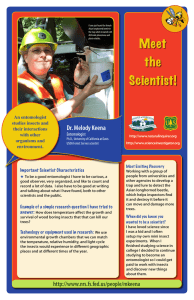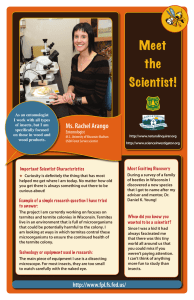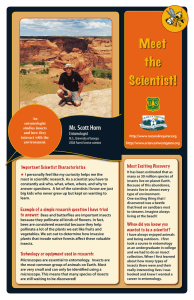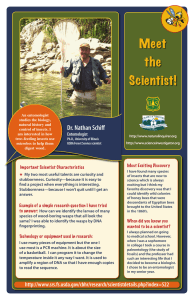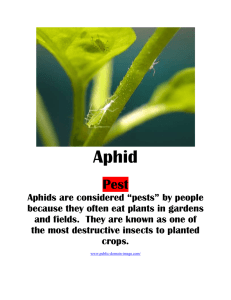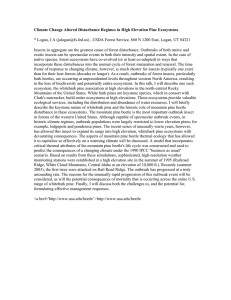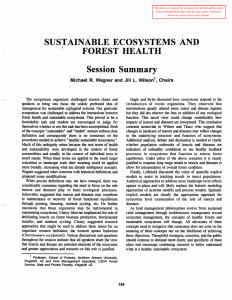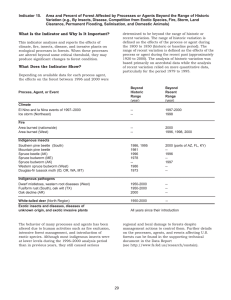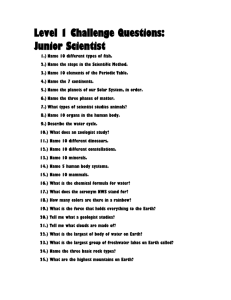Meet the Scientist! Dr. Dan Miller
advertisement
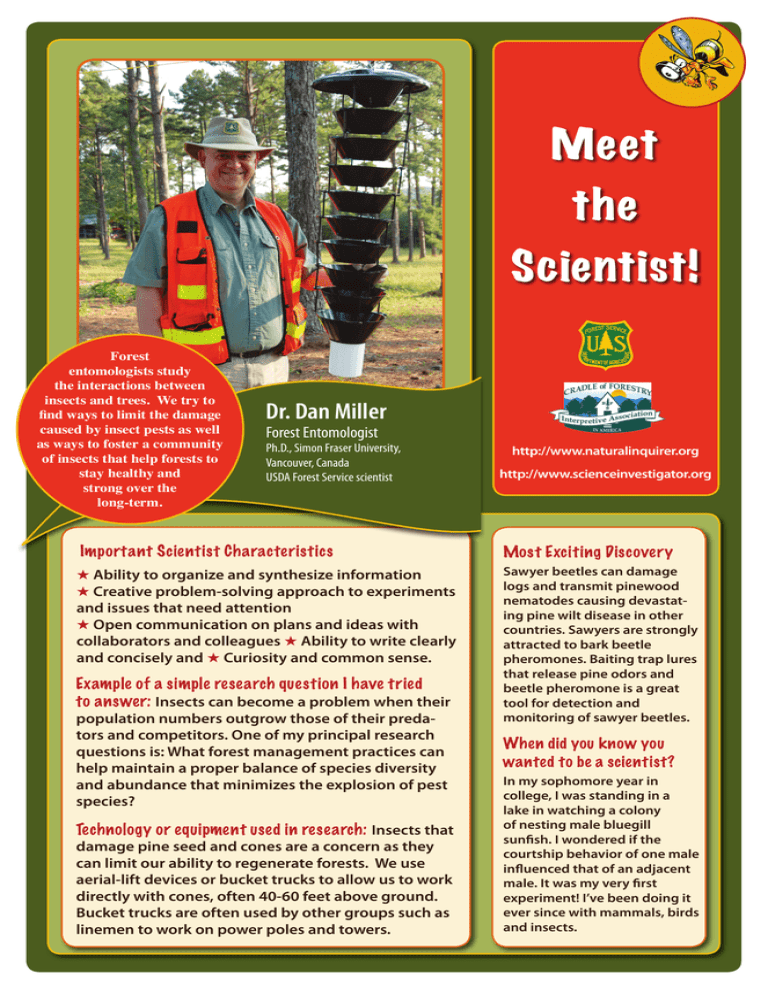
Meet the Scientist! Forest entomologists study the interactions between insects and trees. We try to find ways to limit the damage caused by insect pests as well as ways to foster a community of insects that help forests to stay healthy and strong over the long-term. Dr. Dan Miller Forest Entomologist Ph.D., Simon Fraser University, Vancouver, Canada USDA Forest Service scientist http://www.naturalinquirer.org http://www.scienceinvestigator.org Important Scientist Characteristics Most Exciting Discovery H Ability to organize and synthesize information H Creative problem-solving approach to experiments and issues that need attention H Open communication on plans and ideas with collaborators and colleagues H Ability to write clearly and concisely and H Curiosity and common sense. Sawyer beetles can damage logs and transmit pinewood nematodes causing devastating pine wilt disease in other countries. Sawyers are strongly attracted to bark beetle pheromones. Baiting trap lures that release pine odors and beetle pheromone is a great tool for detection and monitoring of sawyer beetles. Example of a simple research question I have tried to answer: Insects can become a problem when their population numbers outgrow those of their predators and competitors. One of my principal research questions is: What forest management practices can help maintain a proper balance of species diversity and abundance that minimizes the explosion of pest species? Technology or equipment used in research: Insects that damage pine seed and cones are a concern as they can limit our ability to regenerate forests. We use aerial-lift devices or bucket trucks to allow us to work directly with cones, often 40-60 feet above ground. Bucket trucks are often used by other groups such as linemen to work on power poles and towers. When did you know you wanted to be a scientist? In my sophomore year in college, I was standing in a lake in watching a colony of nesting male bluegill sunfish. I wondered if the courtship behavior of one male influenced that of an adjacent male. It was my very first experiment! I’ve been doing it ever since with mammals, birds and insects.
